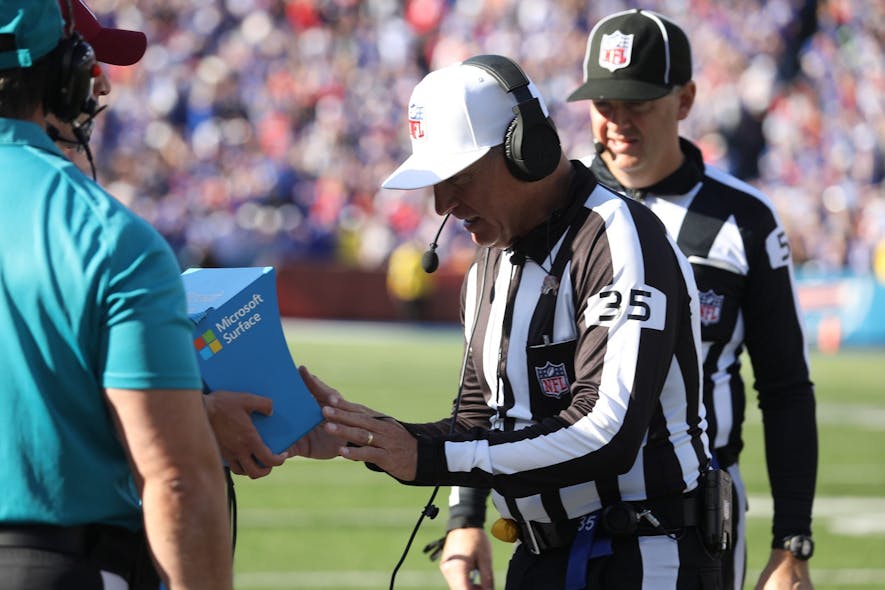A good sports betting column should be backed by a profitable gambler with a proven track record. It should offer picks generated by a sophisticated and conceptually sound model. Most importantly, it should treat the subject with the seriousness it warrants.
This is not that column.
Instead, this will be an off-beat look at the sports betting industry-- why Vegas keeps winning, why gambling advice is almost certainly not worth the money, and the structural reasons why even if a bettor were profitable, anything they wrote would be unlikely to make their readers net profitable, too.
While we're at it, we'll discuss ways to minimize Vegas' edge and make recreational betting more fun, explain how to gain an advantage in your office pick pools, preview games through an offbeat lens (with picks guaranteed to be no worse than chance), and tackle various other Odds and Ends along the way.
Tracking the Unders
In 2022 and 2023, mass-betting the unders was incredibly profitable over the first 6 weeks and essentially just broke even after that. I hypothesized this year that maybe all we needed to do to make a killing was to start our "mass-bet the unders" strategy earlier in the season.
Week 9 was a winning week for us. Technically. Unders went 8-7, which means If you put $10 on the under in every game (and saw the same totals I saw and got all bets at -110 odds), you would have made... $2.73. We're chipping away at our losses! Slowly-- we're still down $111.82 on the year. But hey, it's better than being down $114.54 like we were last week!
Now, About Those Office Pools
Back in Week 3, I went over the basics of how to put yourself in the best position to win your office pick pool. The three basic principles were: make sure you got all your picks in (ideally, just submit random picks early in the week and go back to change them later in the week), take advantage of line movement (if the lines in your pick pool lock early, then any time the line moves in the direction of a team over the course of the week always pick that team in your pool), and make as many office-contrarian picks as you can (because it's easier to differentiate yourself from the pack if you... differentiate yourself from the pack).
We haven't discussed pick pools since then because there's not really anything else to say early in the season. All those principles are great! If you're already doing those things, keep doing those things. But now is a good time to take stock of where things stand and start deciding if you need to adjust your approach to be more or less risk-averse.
Barring any surprise cancellations, there are going to be 272 games played this season (assuming your office runs a separate pool for the playoffs). 138 of them are gone, which leaves 134 to go-- putting us right around the halfway point. This means that if someone is 3% ahead of you right now, you'll need to outperform them by 3% the rest of the way to secure a victory. (And likewise, if you have a 3% edge, your competitors will need to beat you by 3% down the stretch to catch you.)

Take this time to identify your primary competitors. If possible, find out if anyone else in your pool is also relatively sharp. The easiest way to do this is to watch the teams that you bet solely because of line movement and see if anyone else in your pool is also picking the same teams every week. If so, it's probably not a coincidence; they probably know what they're doing.
Beating other sharp managers can be tricky, but you can kick that can down the road for a bit and focus in the meantime on putting more distance between yourself and the non-sharp managers in your office. The last quarter of the season can be devoted to mind games against the other leaders (provided you're fortunate enough to find yourself among them).
If you're down big by now, you're going to have to focus even harder on contrarianism. The more you're down, the more important it is you're picking teams your competitors are not. If you're up big, you want to do the opposite and focus on picking the popular teams because your competitors can't make up ground if you pick the same teams. Also, at this point, make sure you're tailoring your idea of "contrarian" and "chalk" to your actual competitors. If someone is 20 games back, it doesn't matter what they pick because they're probably not catching up. Only concern yourself with those who have a realistic chance of winning it all.
Sometimes, two of your "rules of thumb" will be in conflict. Most often, this will be because there's line movement in the direction of the "popular team" in the office. If the standings are relatively close, it's best to pick conservatively still at this point and let your "follow line movement" rule trump the "pick against the home team" rule. With good line management, anticipate being able to pick about 55% of games correctly instead of 50%. If that kind of edge is going to be enough to have you among the leaders eight weeks from now, stick with it. If you're so far down that even a 5% edge won't be enough, start taking bigger risks.
Remember, once you're out of the money, it doesn't matter where you finish. If payouts go three deep, 4th place is no better than 40th. When high-variance strategies fail, they fail badly. But it's better to try and fail than to just coast along and delay the inevitable, so once you fall far enough behind that embracing variance becomes your only hope of catching up, make the switch.

_(1000_x_500_px)_png)